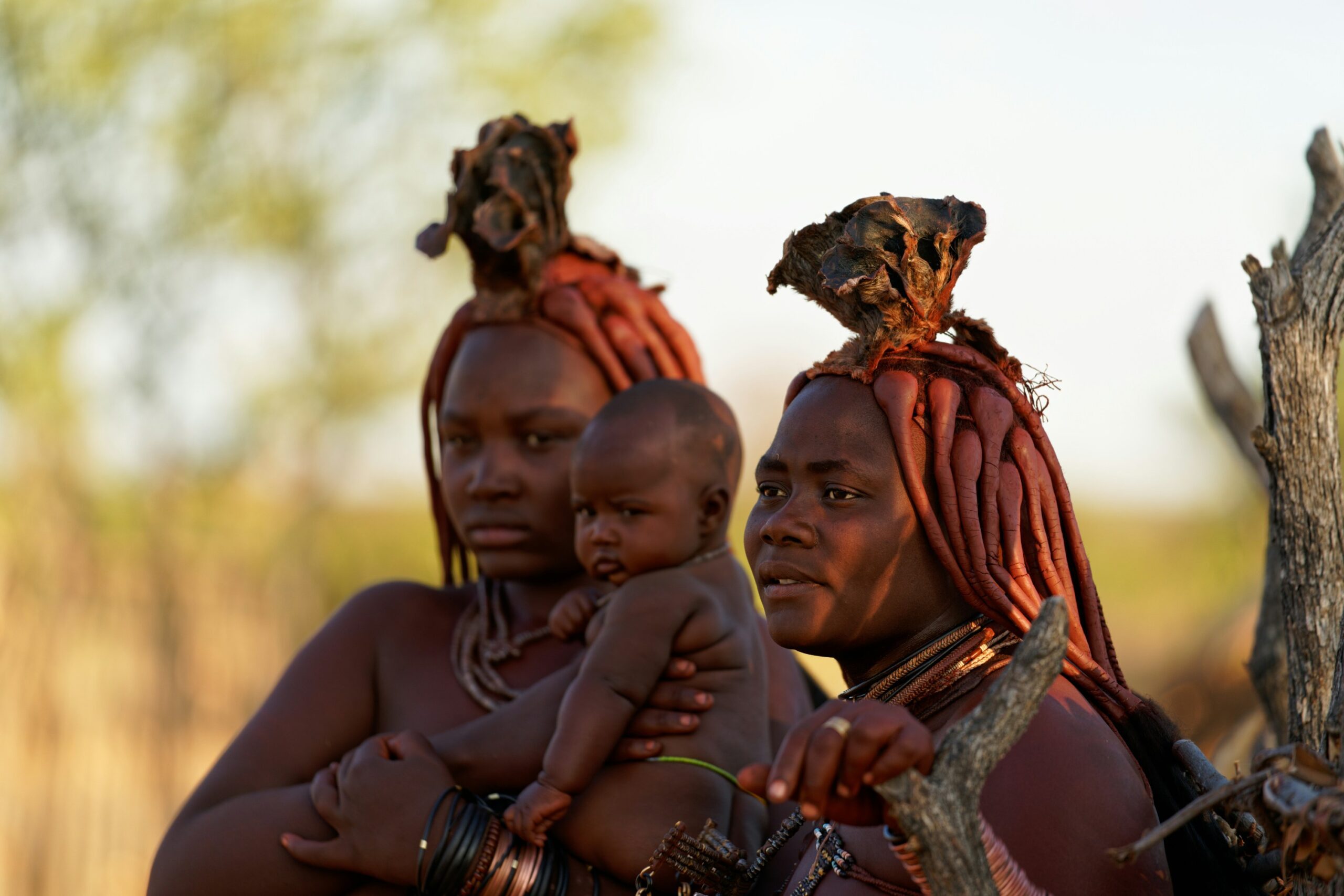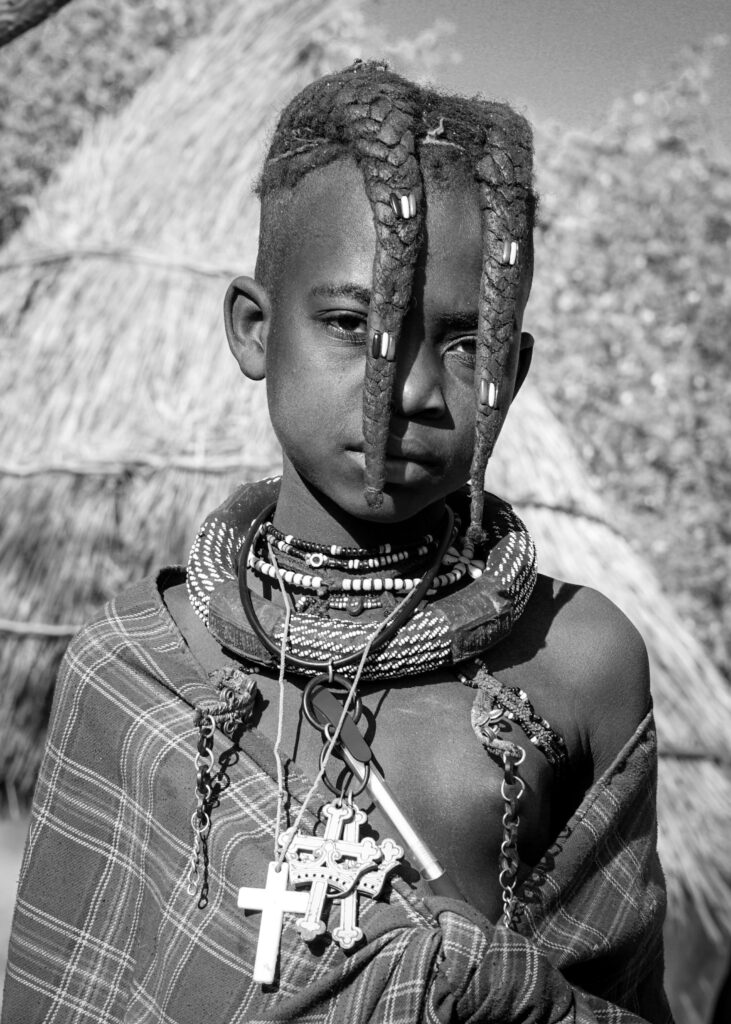
Photo by Colin Watts on Unsplash
The Himba Community: Guardians of the Desert
greensafariguide.com
Introduction
The Himba people are an indigenous semi-nomadic community primarily found in the remote northern regions of Namibia (Southern Africa), specifically in the Kunene region (formerly Kaokoland). Known for their striking appearance and unique traditions, the Himba have thrived in one of the harshest environments on Earth — the arid deserts of Namibia. With a population of around 50,000, they continue to live a traditional way of life, centered around cattle herding and subsistence farming.
Cultural Practices & Traditions
The Himba culture is distinguished by its unique customs and the community’s strong emphasis on beauty, social structure, and spirituality.
Daily Life and Customs: The Himba people are predominantly cattle herders, and their wealth and social standing are often determined by the number of livestock they own. Livestock also plays a central role in their diet, providing milk and occasionally meat. Milking cows and goats is considered a significant daily activity.
Rituals and Ceremonies: They practice ancestral worship and communicate with their ancestors through sacred fire, which is always kept burning in their villages. Ceremonies are often held around the fire, invoking blessings or protection from their ancestors.
Art, Music, and Dance: Traditional music and dance are integral to the Himba’s communal life. Ceremonial dances are performed during important life events such as births, marriages, and funerals. The Himba also adorn their bodies with intricate jewelry and hairstyles, which reflect their social status and age group.
Traditional Clothing and Jewelry: The people are easily recognizable by their skin, which they cover with a paste called otjize (a mixture of butterfat and red ochre), giving them their iconic reddish appearance. This practice not only protects their skin from the harsh desert climate but also holds cultural and aesthetic significance. Himba women wear elaborate hairstyles and adorn themselves with jewelry made from shells, leather, and metal.

Connection to Nature
Living in a harsh desert environment, the community have developed a unique relationship with their surroundings, relying on nature for both sustenance and spiritual guidance.
Sustainable Practices: Despite the arid conditions, the Himba have mastered sustainable herding and farming techniques. They practice rotational grazing, allowing pastures to regenerate, and maintain small-scale subsistence farms near water sources. This ensures they don’t overuse the land in their fragile desert ecosystem.
Sacred Sites and Landmarks: The community hold certain landscapes, particularly mountains and water sources, as sacred. The Kunene River, for example, is considered vital to their survival and spiritual well-being. They view nature as not only a resource but also a spiritual entity deserving of respect and protection.
Environmental Stewardship: Their deep connection to their land ensures that they act as stewards of the environment. They carefully balance their need for resources with the preservation of the fragile desert ecosystem. Their herding practices and respect for water conservation reflect their understanding of living in harmony with nature.

Photo by Bob Brewer on Unsplash

Photo by Elin Tabitha on Unsplash
Cultural Preservation & Conservation Efforts
Despite modernization, the Himba community have resisted many external influences and remain committed to preserving their cultural identity and way of life.
Threats to Cultural Heritage: Encroaching development, land rights disputes, and tourism pose significant threats to the Himba’s way of life. Increased tourism brings both economic benefits and risks of diluting or exploiting their culture. Additionally, climate change has made their traditional herding lifestyle increasingly challenging, as droughts become more frequent and severe.
Conservation Initiatives: The community, in partnership with NGOs, is working to preserve their cultural heritage and protect their environment. Various conservation initiatives focus on sustainable water use, land rights advocacy, and maintaining the balance between traditional lifestyles and modern development.
Education and Advocacy: In recent years, educational programs have been introduced to the Himba youth, ensuring that they learn both modern skills and traditional knowledge. These programs aim to bridge the gap between modernization and the preservation of their cultural identity.
Eco-Tourism & Sustainable Initiatives
The Himba have embraced eco-tourism as a way to share their culture with the world while ensuring the sustainability of their environment and traditions.
Community-based Tourism: Tourists are welcomed into Himba villages to experience their unique way of life. Visitors can learn about their traditional practices, take part in ceremonies, and gain an understanding of how the Himba live in harmony with their desert surroundings. This form of community-based tourism ensures that the Himba benefit directly from tourism, rather than outsiders profiting from their culture.
Eco-Friendly Activities: Himba guides lead eco-tours through their lands, showcasing not only their cultural practices but also the natural beauty of the desert, including the stark landscapes and wildlife adapted to the harsh climate. These tours are designed to be low-impact, preserving the fragile ecosystem while educating visitors.
Economic Benefits of Eco-Tourism: Eco-tourism provides the Himba with additional income, which helps fund community projects such as schools, healthcare, and conservation efforts. It also incentivizes the community to continue their cultural practices while protecting their environment from exploitation.
Success Stories: They have seen significant benefits from their involvement in Namibia’s community conservancy model, where local people manage protected areas and share in the profits from eco-tourism ventures. This has empowered the Himba to maintain control over their land and culture while benefiting economically.
Future Outlook
The community face significant challenges as they continue to live in a rapidly changing world. However, their resilience and adaptability ensure that they will continue to thrive.
Challenges and Opportunities: As climate change intensifies and modern influences increase, the Himba must find ways to adapt while preserving their culture. Water scarcity, in particular, is becoming a growing concern. However, eco-tourism and partnerships with conservation organizations offer opportunities for the Himba to benefit economically and sustain their way of life.
Vision for the Future: The Himba people envision a future where their culture remains intact, their lands are protected, and they continue to thrive as a proud and resilient people. By balancing their traditions with sustainable development and conservation efforts, the Himba hope to ensure that future generations can live in harmony with their environment, just as their ancestors did.
The Himba community stands as a testament to human resilience in the face of environmental challenges. Their commitment to cultural preservation, coupled with their sustainable way of life, offers a powerful example of how indigenous knowledge can contribute to global conservation efforts. As the Himba continue to navigate the pressures of modernization, their role as guardians of the desert and their rich cultural heritage remains vital to the broader conservation movement.

